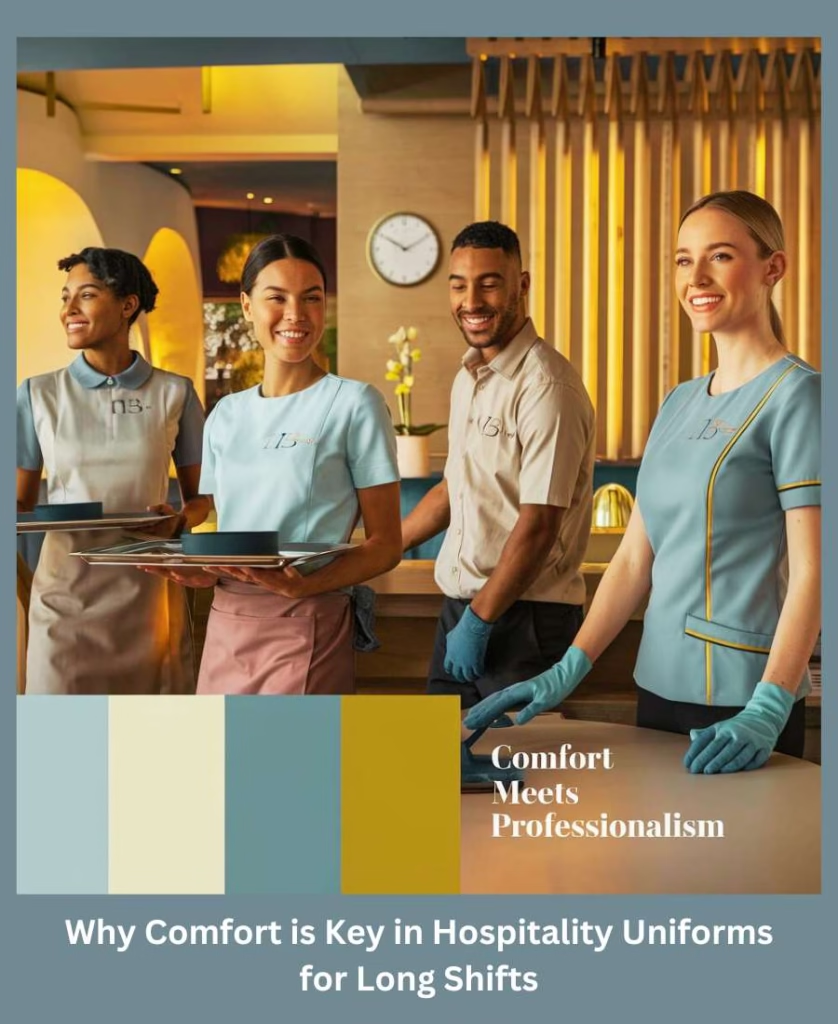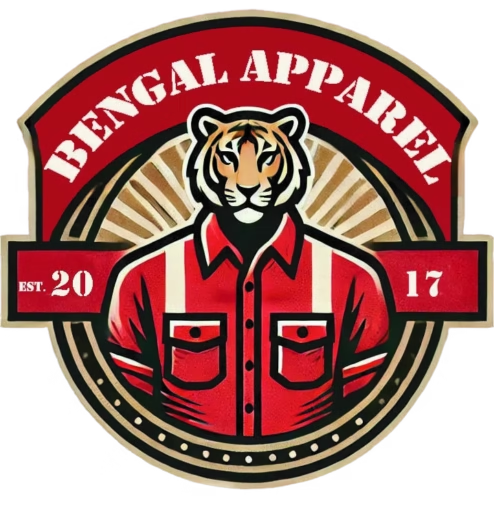The hospitality industry thrives on exceptional service, where staff members are the face of hotels, restaurants, and resorts. From servers and housekeepers to front desk agents, employees often work 10–12-hour shifts, requiring stamina, professionalism, and attention to detail. However, one critical factor that can make or break their performance is often overlooked: the comfort of their hospitality uniforms.
Uncomfortable uniforms—stiff fabrics, poor fit, or inadequate breathability—can lead to fatigue, irritation, and even long-term health issues. This blog explores why prioritizing comfort in hospitality uniforms is not just a luxury but a necessity for employee well-being, operational efficiency, and guest satisfaction.
The Physical Demands of Long Shifts in Hospitality
Hospitality professionals are constantly on the move:
- Waitstaff walk miles per shift while carrying trays.
- Housekeepers bend, lift, and scrub for hours.
- Front desk staff remain standing for extended periods.
Ill-fitting or restrictive uniforms can exacerbate physical strain, leading to:
- Muscle fatigue and joint pain.
- Reduced mobility and slower response times.
- Increased risk of workplace injuries.
A study by Cornell University’s School of Hotel Administration found that 68% of hospitality workers reported discomfort due to uniforms, impacting their ability to perform tasks efficiently.
How Comfort Directly Impacts Employee Performance
Comfortable hospitality uniforms are a strategic investment. Here’s why:
- Enhanced Productivity
- Breathable fabrics like cotton blends or moisture-wicking polyester keep employees cool, reducing distractions from sweat or overheating.
- Stretch materials allow natural movement, enabling staff to work faster and more efficiently.
- Improved Job Satisfaction
- Employees who feel physically comfortable are more likely to stay motivated and engaged.
- A Forbes survey revealed that 73% of workers consider workplace comfort a key factor in job satisfaction.
- Reduced Absenteeism
- Discomfort from poor uniforms can lead to chronic pain, increasing sick days.
- Ergonomic designs minimize strain, promoting long-term health.
Key Features of Comfortable Hospitality Uniforms
- Material Matters
- Moisture-Wicking Fabrics: Ideal for hot kitchens or outdoor venues.
- Breathable Cotton Blends: Prevent overheating during long shifts.
- Stretchable Fibers: Incorporate spandex or elastane for flexibility.
- Functional Design
- Ergonomic Cuts: Avoid tight collars or restrictive seams.
- Adjustable Features: Elastic waistbands, roll-up sleeves, or hidden stretch panels.
- Lightweight Layers: Jackets or aprons that can be easily removed.
- Climate-Appropriate Options
- Summer: Lightweight, short-sleeved uniforms with UV protection.
- Winter: Insulated jackets or thermal-lined trousers.
- Durability Without Compromise
- Reinforced stitching and stain-resistant finishes ensure longevity without sacrificing comfort.

The Psychological Impact of Comfortable Uniforms
Comfort extends beyond physical well-being—it influences mental health and confidence:
- Professional Pride: Employees who feel good in their uniforms project confidence, enhancing guest interactions.
- Reduced Stress: Comfortable clothing minimizes distractions, allowing staff to focus on service.
- Brand Image: Well-designed uniforms reflect a company’s commitment to employee care, boosting morale and retention.
A case study from Marriott International showed a 22% increase in employee retention after introducing ergonomic uniforms tailored for comfort.
Balancing Aesthetics and Comfort
Hospitality uniforms must align with brand identity while prioritizing wearability:
- Stylish Yet Practical: Modern designs with subtle stretch or hidden ventilation.
- Custom Branding: Embroidered logos or color accents that don’t compromise fabric softness.
- Gender-Neutral Options: Inclusive sizing and fits catering to diverse body types.
Brands like ChefWorks and Dickies now offer collections merging sleek aesthetics with performance fabrics, proving style and comfort can coexist.
Real-World Success Stories
Case Study 1: Hilton Hotels
Hilton redesigned its uniforms using feedback from 10,000 employees. The new line featured moisture-wicking fabrics and adjustable fits, resulting in a 30% drop in uniform-related complaints.
Case Study 2: Starbucks
Starbucks introduced aprons with stretchable straps and breathable fabric, improving baristas’ comfort during peak hours.
How to Implement Comfort-Driven Uniforms
- Employee Feedback: Involve staff in design choices through surveys or focus groups.
- Partner with Experts: Work with uniform suppliers specializing in ergonomic designs.
Prioritize Quality: Invest in durable, high-performance fabrics over cheaper, disposable options
Comfort as a Competitive Advantage
In the fast-paced hospitality industry, comfortable uniforms are not an expense—they’re an investment. By prioritizing employee well-being, businesses can:
- Boost productivity and guest satisfaction.
- Reduce turnover and absenteeism.
- Strengthen their brand as an employer of choice.
As the industry evolves, the link between hospitality uniforms and operational success will only grow stronger. The question isn’t whether you can afford to upgrade uniforms—it’s whether you can afford not to.




